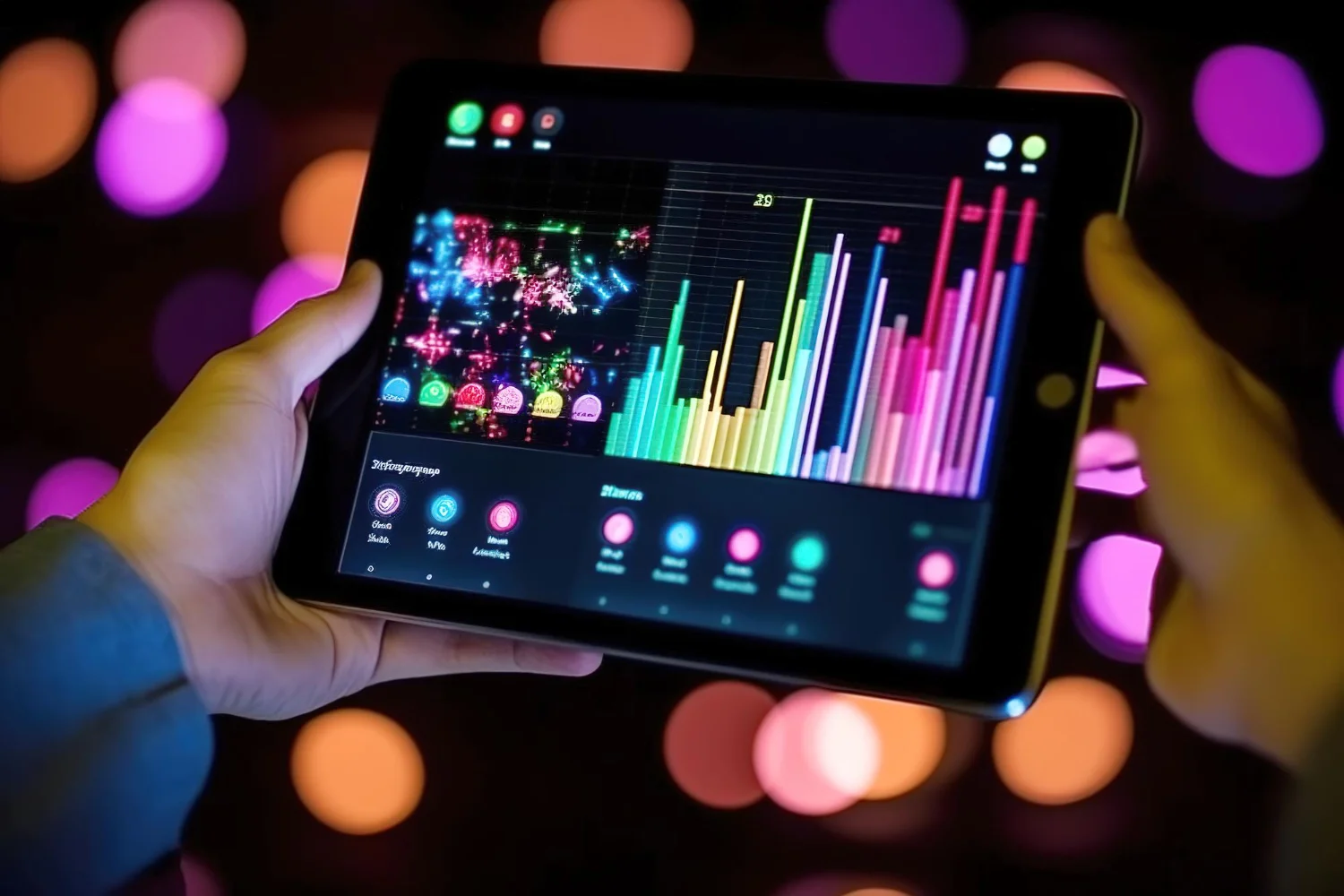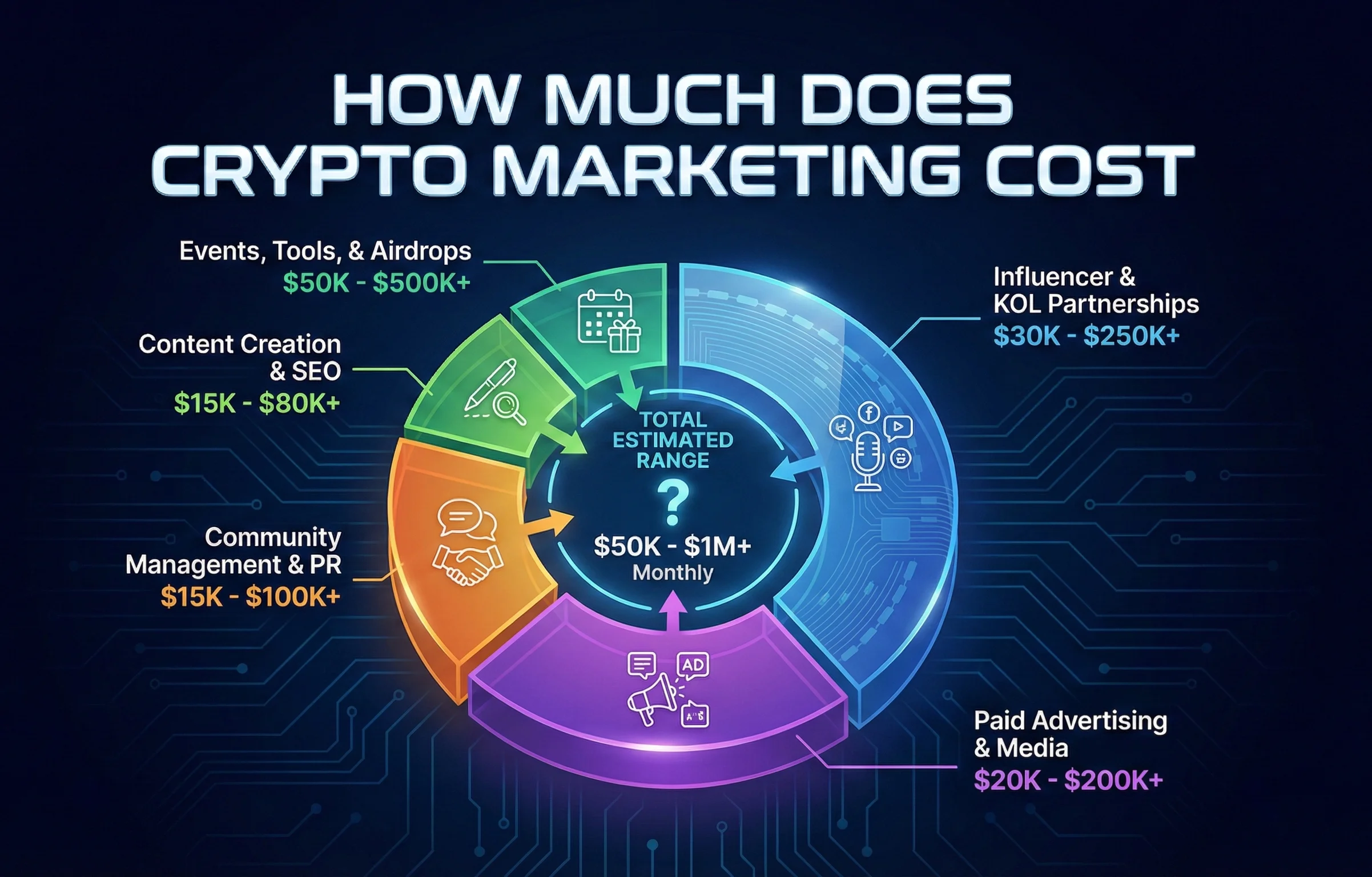In the volatile and fast-paced crypto landscape, simply launching marketing campaigns isn’t enough. To justify budget allocation, optimize strategies, and demonstrate tangible project growth, measuring Return on Investment (ROI) in crypto marketing is absolutely critical. Unlike traditional marketing, calculating ROI in Web3 requires navigating unique on-chain metrics and community-driven dynamics alongside conventional performance indicators.
This guide delves into how crypto projects can effectively measure their marketing ROI, offering a comprehensive framework to prove campaign value and drive data-backed decisions.
Why Measuring ROI is Different (and Crucial) in Crypto
Traditional marketing ROI often focuses on lead generation, sales, and customer acquisition costs. In crypto, while these remain important, the decentralized nature introduces new layers:
-
On-Chain Data: Direct, transparent, and immutable data from blockchain transactions provides unprecedented insights into user behavior and engagement with smart contracts.
-
Community as Asset: Community engagement and sentiment are powerful, yet often hard-to-quantify, indicators of project health and potential future value.
-
Tokenomics & Utility: The value of a crypto asset often depends on its utility, which marketing aims to highlight and drive adoption for, making ROI multi-faceted.
-
Volatility: Market fluctuations can heavily influence perceived ROI, requiring careful consideration of underlying fundamental growth versus speculative price action.
-
Attribution Challenges: Tracing user journeys across Web2 (social media, ads) and Web3 (dApp interactions, wallet activities) can be complex.
The core goal remains: To understand how much value (in terms of project growth, adoption, or revenue) your marketing efforts are generating relative to their cost.
Key Metrics for Crypto Marketing ROI
To accurately measure ROI, combine traditional digital marketing metrics with Web3-native KPIs.
Traditional Digital Marketing Metrics (Off-Chain)
These foundational metrics help track top and mid-funnel performance:
-
Website Traffic: Unique visitors, page views, bounce rate, time on site (from specific campaigns).
-
Social Media Engagement: Follower growth, impressions, likes, shares, comments, sentiment analysis.
-
PR Coverage & Mentions: Number of media mentions, estimated reach, sentiment of coverage, backlinks generated.
-
Email Marketing: Open rates, click-through rates, conversion rates (e.g., newsletter sign-ups).
-
Paid Ad Performance: Click-Through Rate (CTR), Cost Per Click (CPC), Cost Per Acquisition (CPA – for specific actions like dApp sign-ups or initial wallet connects).
Web3-Native Metrics (On-Chain)
These metrics provide deeper insights into actual user behavior within your ecosystem:
-
Active Wallet Addresses: The number of unique wallets interacting with your smart contracts or dApp. This is a critical indicator of adoption.
-
Total Value Locked (TVL): For DeFi projects, measures the total assets staked in your protocol, indicating trust and liquidity.
-
Transaction Volume/Count: The total value or number of transactions occurring on your protocol or with your token/NFTs.
-
Token Holders/Unique NFT Holders: Growth in the number of individuals holding your asset.
-
Governance Participation: For DAO-governed projects, the percentage of token holders participating in voting demonstrates community engagement and decentralization.
-
Smart Contract Interactions: Track specific actions users take within your dApp (e.g., mints, swaps, claims, staking).
-
Bridge Volume: For cross-chain projects, the volume of assets bridged reflects ecosystem interoperability.
Calculating ROI in Crypto Marketing
The basic ROI formula remains: ROI = ( (Generated Value – Marketing Cost) / Marketing Cost ) x 100%
The challenge lies in defining “Generated Value” in a crypto context.
Steps to Calculate and Interpret ROI:
-
Define Clear Objectives & KPIs: Before launching any campaign, clearly state what you aim to achieve (e.g., increase active users by 20%, grow TVL by $5M, acquire 10,000 new token holders). Assign specific, measurable KPIs to each objective.
-
Assign Monetary Value to Actions: This is often the trickiest part.
-
Direct Revenue: If your project has a direct revenue model (e.g., dApp fees, NFT sales), attribute revenue generated directly from marketing channels.
-
User Lifetime Value (LTV): Estimate the long-term value of an acquired user. While harder in early-stage crypto, a growing user base generally correlates with project value.
-
Implied Value: For community growth or brand awareness campaigns, assign an implied or proxy value. For instance, a new active user might be valued at a certain amount based on industry benchmarks or previous fundraising valuations. A strong, engaged community might indirectly lead to higher token stability or increased future adoption.
-
Cost Savings: If marketing (e.g., content marketing) reduces customer support inquiries, quantify those savings.
-
-
Track All Marketing Costs: Include ad spend, agency fees, content creation costs, influencer payments, event participation fees, team salaries allocated to marketing, and tools/software.
-
Implement Robust Tracking & Attribution:
-
UTM Parameters: Use UTM tags religiously for all digital links to track traffic sources, campaigns, and content.
-
Tracking Pixels/Analytics: Integrate traditional analytics (Google Analytics, Mixpanel) for off-chain website and app behavior.
-
On-Chain Analytics Tools: Utilize specialized Web3 attribution platforms (e.g., Nansen, Dune Analytics, custom dashboards) to connect off-chain marketing efforts to on-chain actions (e.g., did a user who clicked a specific ad then mint an NFT?).
-
Attribution Models: Consider multi-touch attribution models (e.g., linear, time decay, position-based) to give credit to various touchpoints in a user’s crypto journey, not just the last click.
-
-
Analyze & Optimize: Regularly review your ROI reports. Identify which channels and campaigns are most effective and which are underperforming. Reallocate budget to maximize returns.
-
Benchmarking: Compare your project’s marketing ROI against industry benchmarks, if available, or against your own historical performance.
Challenges in Measuring Crypto Marketing ROI
-
Attribution Across Wallets/Devices: Users might interact with your project across multiple devices or wallets, making it hard to create a unified user journey.
-
Market Volatility: A sudden price surge or drop of your token can distort ROI calculations if not accounted for by focusing on underlying user acquisition or utility metrics.
-
Long Conversion Cycles: Some crypto actions (e.g., staking, governance participation) have longer conversion cycles than immediate purchases, requiring longer lookback windows.
-
Data Silos: Combining off-chain and on-chain data can be challenging without integrated analytics solutions.
-
Defining “Value”: Quantifying the exact monetary value of community sentiment or brand awareness requires careful, often subjective, estimation.
Despite these challenges, a disciplined approach to measuring ROI is indispensable for any crypto project aiming for sustainable growth. By integrating robust tracking, focusing on a blend of on-chain and off-chain metrics, and continuously optimizing strategies, you can clearly demonstrate the value of your marketing efforts and secure your project’s future in the competitive crypto landscape.
Prove the value of your crypto marketing campaign
Partner with CryptoVirally for advanced ROI measurement frameworks, on-chain attribution expertise, and data-driven marketing strategies that clearly demonstrate your project’s growth and maximize your marketing budget.



